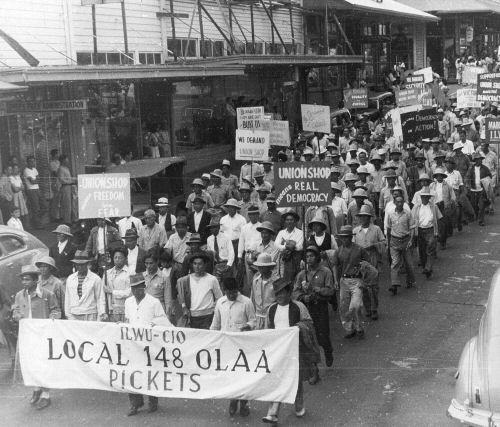
In 1946 sugar plantation workers across the islands of Hawaii from all ethnic backgrounds shutdown the entire plantation system in the states first multi-ethnic industrial strike.
As a Japanese American, I’m especially moved by the stories of early Asian and Pacific Islander immigrants and Native Hawaiians who are a part of the tapestry of our labor history, though their stories are not well celebrated. From the sugar fields of Hawai’i to the California coast where the Transcontinental Railroad originated to the grape fields in Delano, California, employers exploited these immigrant workers brutally.
The 19th century was the era when bosses perfected the strategy of pitting one race of workers against another, all in a cycle to drive down wages. But this was also the era where workers—especially Asian immigrants—figured out how to organize across races and nationalities. This was a matter of survival for those who defied expectations.
Their success is more remarkable when you think they often had to overcome cultural and language barriers to find commonality with others—and all in a time when the right to organize was not well protected.
There are countless stories of untold heroism in this history.
Native Hawaiian sugar workers staged the first general strike by native laborers in the Hawaiian Islands in 1841 because they rejected the western concept of work and being paid in scrip. Five thousand Chinese workers staged a strike covering 30 miles of rail in 1867. There’s the story of Japanese and Mexican agricultural workers fighting for justice together in sugar beet fields at the very beginning of the 20th century. The lessons of the Japanese-Mexican Labor Association repeated in the 1960s when Filipino workers banded with Chicano and Mexican workers to organize grape fields in California. Standing right alongside César Chávez were Larry Itliong and Philip Vera Cruz.
It’s extraordinary to think that these workers often were organizing at a time when they had little support from communities, press or even organized labor. In fact, it was the labor movement of the late 19th century that promoted the hateful Chinese Exclusion Act, which has the ugly distinction of being the first and only major federal legislation to explicitly suspend immigration for a specific nationality. These workers often were not welcomed into the unions of the day, but it didn’t stop them from acting collectively and demanding justice at work.
Today, the landscape of organized labor is vastly different from what existed in the 19th century. Almost 800,000 Asian American and Pacific Islanders (AAPI) call themselves union members (Bureau of Labor Statistics, 2024).
In 1992, we founded the Asian Pacific American Labor Alliance, AFL-CIO (APALA) to recognize the role of AAPI union members in the movement and to make a commitment to organizing AAPI workers. APALA has since served as a vital entry point for AAPI union members to their union activism and as an important resource for unions as we continue to train AAPI organizers through our Organizing Institutes. We are also the bridge to AAPI communities which, not surprisingly, have become increasingly pivotal in elections as we continue to grow our voter turnout.
Despite a dark history of labor’s hostility toward AAPI workers, we are now a vital part of today’s labor movement and will remain vigilant to ensure we do not regress in the name of trade or nationalism. We will fight for worker rights, job protections and safe communities while uplifting all workers.
As immigration trends have changed, a new wave of AAPI workers is organizing in their sectors and winning. The New York Taxi Workers Alliance is organized by mostly south Asians from India, Pakistan and Bangladesh. Members staged a strike in 1998 where 98% of New York City’s 24,000 yellow cab drivers parked their cars on a single day to protest unfair and arbitrary fines. 98%! Young AAPI academic workers are leading in their unions and AAPI teachers who are members of the American Federation of Teachers (AFT) and National Education Association (NEA) are leading the fight to include AAPI history in our curricula.
There is still a long way to go and more organizing to be done. The rise in anti-Asian hate during the pandemic underscores that the ugliness of racism that fueled the nativist rhetoric of the 19th century isn’t that far away. False narratives about AAPI folks being meek and passive continue to undercut the truth that we will always fight for justice at both work and in our communities. Yet I’m optimistic as I look ahead to a new generation of AAPI union activists leading their unions. We are sharing the collective responsibility of uplifting our history and our members as rightful and powerful parts of the labor movement.
May is Asian Pacific American Heritage Month, a time to cast a spotlight on AAPI contributions to our culture and heritage. I welcome this as it focuses on a national conversation on our history. But I do look forward to the day when our AAPI labor history is seamlessly woven into the fabric of all labor history. A day when we think of our labor heroes and conjure up not only the images of Mother Jones, A. Philip Randolph and César Chávez, but also Larry Itliong or May Chen, who led the 1982 International Ladies’ Garment Workers’ Union (ILGWU) strike in New York City’s Chinatown. I think that is a fitting responsibility for us today to honor our heroes of yesterday.
Resources
Sandra Engle is a retired UAW member and executive director of the Asian Pacific American Labor Alliance, AFL-CIO (APALA).

